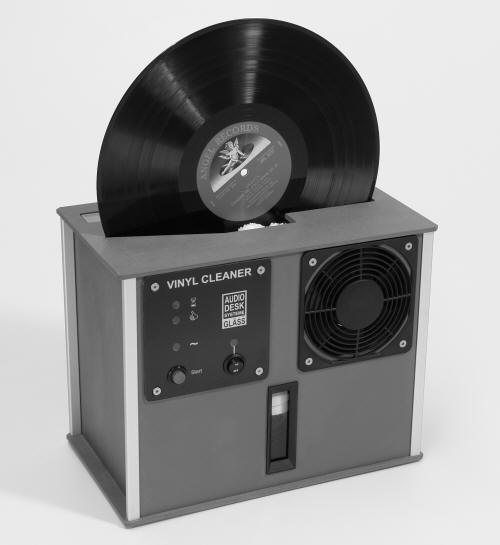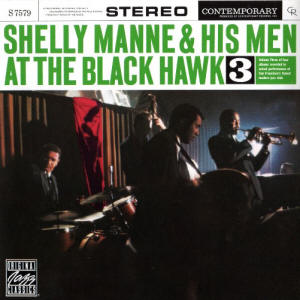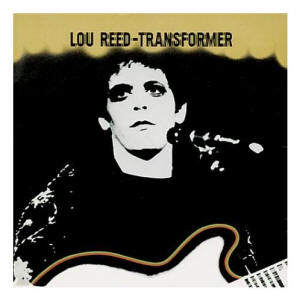|
|
You are reading the older HTML site
Positive Feedback ISSUE 66
audio desk Vinyl Cleaner - Top of the Mount as reviewed by Myles B. Astor
Cleanliness ranks second only to Godliness, and nowhere in high-end audio is this archaic proverb more applicable than when it comes to playing those ancient twelve-inch black discs. In fact an exhaustive Google search recently unearthed a long lost copy of the Ten Commandments of record cleaning that reads as follows: 1. Thou shalt strive to do no harm; 2. Thou shalt extend the record's lifespan; 3. Thou shalt allow for the retrieval of all the information in the record grooves; 4. Thou shalt reduce (or in a best case scenario eliminate) the number of pops and tics and/or surface noise; 5. Thou shalt keep the record grooves free from dirt, dust, pet hair, fingerprints, microorganisms/mold, peanut butter and jelly, etc.; 6. Thou shalt completely remove all record cleaning waste fluid; 7. Thou shalt remove the "sticky" mold release compound from new LPs; 8. Thou shalt respect the record plasticizer; 9. Thou shalt not increase the record's static charge; 10. Thou shalt not sound like a Concorde taking off. In the Beginning Record cleaning machines have—except say in the case of noisiness or the earliest generation of units equipped with groove gouging, Teflon-lipped suction nozzles (Both personal experience and Stereophile vol. 5. No, 9, p.21, 1982; in contrast to JGH's comments, however, both Nitty Gritty and VPI suffered from the same issue)—largely abided by these Ten Commandments. Moreso, it's become increasingly apparent that other transgressions—such as the "sonic signatures" associated with different cleaning solutions—is in large part attributable to the record cleaning machine's ability to remove the very last vestiges of waste fluid from the record grooves. And completely removing the waste solution from the record's surface is no walk in the park given the fluid's surface tension increases as the quantity of fluid decreases. In fact, this explains why modern record cleaning machines equipped with more powerful vacuum motors like VPI's Typhoon actually "sound" better than their smaller brethren. Now practically every "wet" record cleaning machine roots harkens back to Percy Wilson's original design. First shown in a 1965 AES Letters to the Editor entitled "Instruments for Record Cleaning" (Wilson actually laid out the basic elements for his "wet cleaning" design a year earlier in his 1964 AES presentation entitled "Record Contamination Causes and Cure."), Wilson's approach combined "wet cleaning" of the album with a vacuum based, suction mechanism to remove the waste fluid and contaminants from the LP's surface. At this point, manufacturers basically took two different approaches to designing record cleaning machines. First up were the direct descendants of Wilson's original design such as the Keith Monks (and present day Loricraft and Odyssey) that used a "tonearm-like suction tube/string mechanism" to suck the dirty cleaning fluid off the vinyl. Not necessarily the easiest units to set-up and to operate, these record cleaners also take a bit of time to wash and dry both album sides (Stereophile, Vol. 4, No.4, p.29, 1979). Later on came the "original" VPI and Nitty Gritty machines that were far easier to operate and reduced the time required to clean an album to a matter of minutes. VPI and Nitty Gritty's biggest contribution was, however, building a record cleaning machine that practically every audiophile could afford. New Testament Reiner Glass of Audio Desk, however, took a fresh and somewhat unconventional approach to the design of the Vinyl Cleaner. Four years in research and development and currently four years in production, Glass's machine breaks rank with the establishment in a number of important ways. First and foremost, the Audio Desk Vinyl Cleaner is fully automatic and under normal conditions takes roughly 6 minutes to wash and dry both album sides (Four additional 30-second washing cycles up to a total of 2½ minutes of extended cleaning time are available for cleaning those garage sale). Now admittedly the instructions (yes, I do make a point of reading the instructions as experience has shown this usually leads to less problems and heartache down the road) were at first blush, slightly overwhelming; after all was said and done, however, operating the machine turned out to be quite simple. Next, Glass chose to clean those precious—and very often irreplaceable albums—with a combination of ultrasound and four counter-rotating microfiber barrels/brushes (two per album side). While ultrasound has over the years been used to clean medical and dental instruments, jewelry, industrial parts, etc., this is the first time this technology has been applied to 12-inch vinyl records. These high frequency sound waves act to produce cavitation bubbles that agitate the liquid solution; the bubble's resulting high implosive forces clean all the way to the very bottom of the groove—and most importantly—remove those mould release compounds (that's why in part the Mobile Fidelity-type record brushes that seem to get into the grooves rather than the bristle-based brushes for "ordinary" record cleaning are seeing more use in my system). An added bonus is that the platterless Audio Desk machine won't cross contaminate the freshly cleaned side of the LP. Glass also put his machine through a series of safety tests before bringing his product to market. One test involved first assessing the record under a microscope pre-cleaning, running the disc a hundred or so times through the cleaning process and then reassessing the condition of the LP. At the end of this accelerated aging process, Glass wasn't able to detect any damage to the record surface. And there have been some improvements made to the machine along the way including some changes to the wipers, more air for drying and perhaps most significantly, filtering the air used to dry the LP. Finally, Glass chose to dry the disc with a powerful fan rather than the "traditional" tried and true method of vacuuming the waste fluid off the record surface. The rationale behind this decision according to Glass is preventing or reducing the build-up of static electricity often encountered with more traditional record cleaning machines. That said kitty hairs still, frustratingly, managed to find their way onto freshly cleaned records. Ascending the Mountain The record cleaning process begins with first plugging the machine into the wall, then installing the fluid filter and lastly using the manufacturer supplied bubble level atop the machine to level the Vinyl Cleaner. Then Audio Deske's specially formulated, record cleaning solution along with 1 gallon or 4 liters of distilled water is added to the cleaning chamber. Audio Deske's fluid serves not only to clean the record but also to reduce the solution's surface tension and augment the ultrasonic cleaning process. Unlike some other record cleaning fluids like the eminently forgettable Genie in a Bottle, there wasn't—except for one weird instance—any gunking up of the stylus after cleaning with the Audio Desk (perhaps this LP had been treated with some record preservative?). Finally, the Vinyl Cleaner is turned on and the machine primed for one cycle before being pressed into service. Once the priming cycle is finished, the album is inserted vertically into the cleaning chamber and then gently pressed down until encountering light resistance. As a matter of course—not to mention some past bad experiences with other machines—make sure to start with a junk record just in case something goes south. No one wants to trash an irreplaceable disc! Then push the red button on the front of the machine for the desired number (1 to 5) of cleaning cycles (denoted by a beep) and step back, buckle up and hang on for the ride! First, the record cleaning fluid quickly fills the cleaning chamber; then the "fuzzy," white, cleaning barrels contract and begin to churn away while the ultrasound cleans the LP. This cleaning cycle lasts for roughly a minute after which the cleaning barrels retract and the cleaning fluid in the chamber is drained and refiltered. Then the drying cycle commences. The album rotates at a "slow" speed while being both squeegeed and blasted with filtered, clean air. This cycle lasts for approximately two minutes followed by a relatively speaking, "fast," ten second spin that appears to gets any remaining pockets of fluid off the wipers. Finally, the record is turned for an additional 2½ minutes at a "very slow" speed while continuing the blow drying process. At the conclusion of the drying cycle, the machine beeps three times and the record is "released" from the chamber. Be sure when removing the record to lift the album straight up so as to avoid accidentally smearing water from the barrels onto the record! Now this particular review sample had been around the block a few times e.g.. to every show in this country and then some and every so often, primarily with thin LPs, a drop or two or three or so of liquid was left on the record. Some new wipers along with wedging some tie wraps between the wipers and the slot holding the wipers mostly remedied the problem but a microfiber cloth was always close at hand. On the other hand, the new machine that now resides in my system cleans thick 200g slabs of vinyl, paper thin Dynawarp discs and everything in between with nary a spotting issue. Lastly, every record cleaning machine, and the Audio Desk Vinyl Cleaner is no exception to the rule, requires some periodic maintenance. In the case of the Vinyl Cleaner, designer Glass recommends because of normal wear and tear along with shrinkage of the brushes' microfibers replacing the cleaning barrels every 500 to 800 records. Second, the record cleaning solution should, depending upon whether one is primarily washing mostly new, clean records (longer time between changes) or mainly filthy garage sale finds (shorter time between changes), be replaced every 100 to 200 records (a red LED warning light on the front of the unit indicates when the fluid needs topping up too). Audiophiles who are particularly OCD might also want to pick up a $3 to $5 hand tally counter to track of the number of albums cleaned (yes, I know some audiophiles who use these counters to keep track of the number of hours on their cartridges or tubes!). Also, don't forget to stick a dot on the inner record sleeve to keep track of whether and /or when the LP was cleaned. Finally, the fluid filter element should be periodically checked and rinsed in water if dirty. Revelations Much of the sonic improvements wrought by cleaning those LPs with the Audio Deske's Vinyl Cleaner would appear directly attributable to a combination of both improved cartridge scanning of the groove walls and a reduction in the record cleaning fluid's signature. Or as Peter Ledermann put it, improved tracking reduces "cartridge jitter" allowing for more intimate contact between the stylus and groove wall resulting in greater information retrieval (not to mention that cleaner grooves equals cleaner stylus too!). The effects of a good wash with the Audio Desk are first and foremost manifested by a more tape-like midrange fullness, image solidity and dimensionality. In fact, it's readily apparent that many other record cleaning fluids just thin the midrange out a smidge and give some the mistaken impression that the resultant sound is the fault of the cartridge and not the cleaning process.
Indeed cleaning with the Vinyl Cleaner reveals even more midrange and low level information on that reference disc Mallets, Melody and Mayhem (Columbia CS8333) without any of that telltale record cleaning fluid "sonic signature" typified by upper octave softening, loss of transparency (particularly in the back of the soundstage), smoothing out of transient attacks and rounding in the bass. What's was more surprising and a completely unexpected finding, however, was that records washed with the Vinyl Cleaner sounded louder. As expected, the freshly cleaned record sounds much quieter with a far greater ability to both "see" and hear into the back of the soundstage. There's a greater sense of air surrounding the piano. Low frequencies possess greater impact; the striking of the triangle is much more solid and the ringing extends out just a little longer.
Cleaning that amazing live 1959 recording of Shelly Manne at the Blackhawk, Vol.3 (Contemporary C7579) with the Audio Desk also resulted in for some unknown reason the disc sounding louder. Instruments, as they often do on the great Roy DuNann Contemporary tapes, sound more like they are in the room with you. Cleaning also really opened up the sound and greatly increased the ability to hear into the recording and really appreciate that California hard bop style exemplified on this recording by Richie Kamuca's smoky sounding tenor sax, Victor Feldman's graceful piano or Manne's precise drum playing. Plus Joe Gordon's trumpet has a greater sense of added reverb and Monty Ludwig's bass is so much cleaner. Another album greatly benefiting from going through the Vinyl Cleaner washing process was the Jimmy Rowles and Ray Brown recording Tasty (Concord CJ-122). Here too cleaning brought a far greater sense of transparency resulting in not only a greater ability to capture instrumental layering but also recreate the actual sense intervening space or air between Brown's bass and Rowles's piano. Each instrument, not unlike what one gets with proper SRA/VTA, is in greater focus. Brown's bass lines are no longer buried in murk and mire and stand out more. Those famous finger snaps sounded far more realistic eg. crisper and more solid.
Yes, the Audio Desk Vinyl Cleaner even spins its magic on brand spanking new LPs. Take for example, the Speakers Corner reissue of the legendary Lou Reed album Transformer. (Speakers Corner/RCA LSP-4807). Prior to a good scrubbing with the Audio Desk, Reed's voice on "Walk on the Wild Side" sounded rather flat and two-dimension. Cleaning this freshly minted vinyl disc with the Vinyl Cleaner brings with it a new level of intimate detail to Reed's voice along with a new found sense of three-dimensional body (now if it only sounded that good in college—and that was with the aid of artificial stimulants). At the same time, cleaning results in an even better delineation of the recording's ambience and ambient space surrounding the backup singers, The Thunderthighs. Seeing God? It's not often that audiophile's prayers are answered. The Audio Desk Vinyl Cleaner is definitely doing something different and better than other conventional cleaners that have been in house. The records are cleaner and quieter, they sound better and most importantly and most importantly they're going to last longer (Not to mention that playing clean record should extend your cartridge's lifespan). The Audio Desk Vinyl Cleaner removed even more pops and ticks—plus an annoying skip or two from used records—than the best of the new enzyme cleaners. Sadly, though, no machine known to mankind can repair that damage caused by misaligned cartridges, cartridges tracked at two tons, ground in dirt damage, etc. But these newest enzyme-based record cleaning fluids don't come, however, without their own downsides either. Cleaning both album sides requires on the order of ten to twenty minutes. So as silly as it seems, analog devotees now need two fluids to wash their records: an enzyme based cleaner for those reference quality or extremely dirty LPs and a quicker cleaning solution like the MFSL Super Wash for the bulk of the record collection. While the best enzyme-based cleaners are quite an improvement when it comes to transparency, openness, resolution and low end over the older record cleaning fluids, they still don't come near what the Audio Desk does especially in the midrange! Does this mean my "traditional" record cleaner machine is history? That's highly unlikely because still want to be able to test other fluids as there are many audiophiles out there that sadly can't afford this machine and use other more modest machines to accomplish the same end result. But for those analog junkies who won't settle for anything but the best, the Audio Desk Vinyl Cleaner definitely merits serious consideration. Myles B. Astor
Audio Desk Vinyl Cleaner
Ultrasystem |











